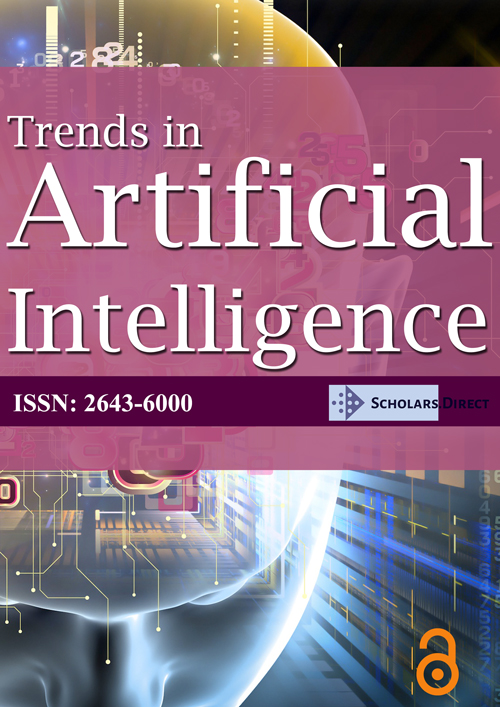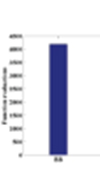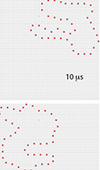
ISSN: 2643-6000
Trends in Artificial Intelligence is an open access, peer reviewed journal dedicated to publish novel research in the intelligence exhibited by software's or machines. It also includes but not limit to reasoning, knowledge, planning, learning, natural language processing (communication), perception and the ability to move and manipulate objects. Artificial Intelligence is interdisciplinary field in which a number of sciences and professions converge, including computer science, mathematics, psychology, linguistics, philosophy and neuroscience, as well as other specialized fields such as artificial psychology.
Trends in Artificial Intelligence covers various article types such as original, reviews, commentaries, rapid communication, other short articles in the academic field of study which studies how to create computers and computer software that are capable of intelligent behavior. All the published manuscripts undergo peer review processing under evaluation by International subject experts.
All the published content with us are made available freely with no restriction barriers under the terms of Creative Commons Attribution License.

Professor
Department of Information Science
University of Arkansas, Little Rock
United States of America
Tel: 501-683-7266

Professor
Department of Psychology
University of Southern California
United States of America
Tel: 213-740-7967

Professor
Electrical Engineering (EE) Department
California State University
United States of America
Tel: 714-281-5859

Chief Intelligence and Innovation Officer
The Sharon Disney Lund Medical Intelligence and Innovation Institute
Children Hospital of Orange County,
United States of America
Tel: 714-509-7576

Leader of Dependable Systems Research Group
University of Hull
Cottingham Rd, HU67RX
HULL, United Kingdom
Tel: +44 (0) 1482 465981

Director of Semeion
Research Centre of Sciences of Communication
Via Sersale 117
Rome, 00128, Italy
Phone: +39-06-50652350
Submit your manuscript to this journal through online or email us at editorialoffice@scholars.direct

Research Article
Evaluating the Generalizability of Support Vector Machine for Breast Cancer Detection
Breast cancer is caused by the abnormal growth of cells in the breast. Malignant breast cancer is an aggressive type that, if not diagnosed and treate... Read more

Research Article
The Camera Doesn't Lie... or Does it? Police Use of Facial Recognition Technology and Racial Bias
Law enforcement has transformed drastically by advances in technology. Police, like the rest of society, have been confronted by an array of new chall... Read more

Research Article
An Adaptive Neuro-Fuzzy Framework for Predicting the Likelyhood of Diabetes Mellitus
Diabetes is a serious public health concern around the world, and its incidence is increasing on a daily basis, making it a global epidemic. Diabetes ... Read more

Review Article
The Self-Organizing Consciousness: Implications for Deep Learning
The success of deep neural networks is impressive, but the behavior of machines is far from mirroring the behavior of humans. Among the most widely ac... Read more

Review Article
Since the new revolution in Artificial Intelligence (AI) and the advent of Deep Learning, the massive trend in AI is mainly driven by the computer sci... Read more

Commentary
A Commentary on the Application of Artificial Intelligence in the Insurance Industry
Millions of uninsured individuals in the US live in the areas, which are highly vulnerable to health and other risks. Artificial intelligence (AI) has... Read more

Review Article
Identification of the sites of post-translational modifications (PTMs) in protein, RNA, and DNA sequences is currently a very hot topic. This is beca... Read more

Original Article
Solving Integer Programming Problems by Hybrid Bat Algorithm and Direct Search Method
The goal of this work is to suggest a new hybrid algorithm to solve integer programming by incorporating the bat algorithm with direct search methods.... Read more

Research Article
Scan Transcription of Two-Dimensional Shapes as an Alternative Neuromorphic Concept
A similarity response is only one of many kinds of response we can elicit from a subject, by suitable manipulation of the number and variety of the st... Read more

Communication
What Constitutes Elemental Shape Information for Biological Vision?
The part itself would be seen not as a "part" of some earlier figure but as a self-sufficient whole in its own right Friedrich Wulf. We do not yet und... Read more